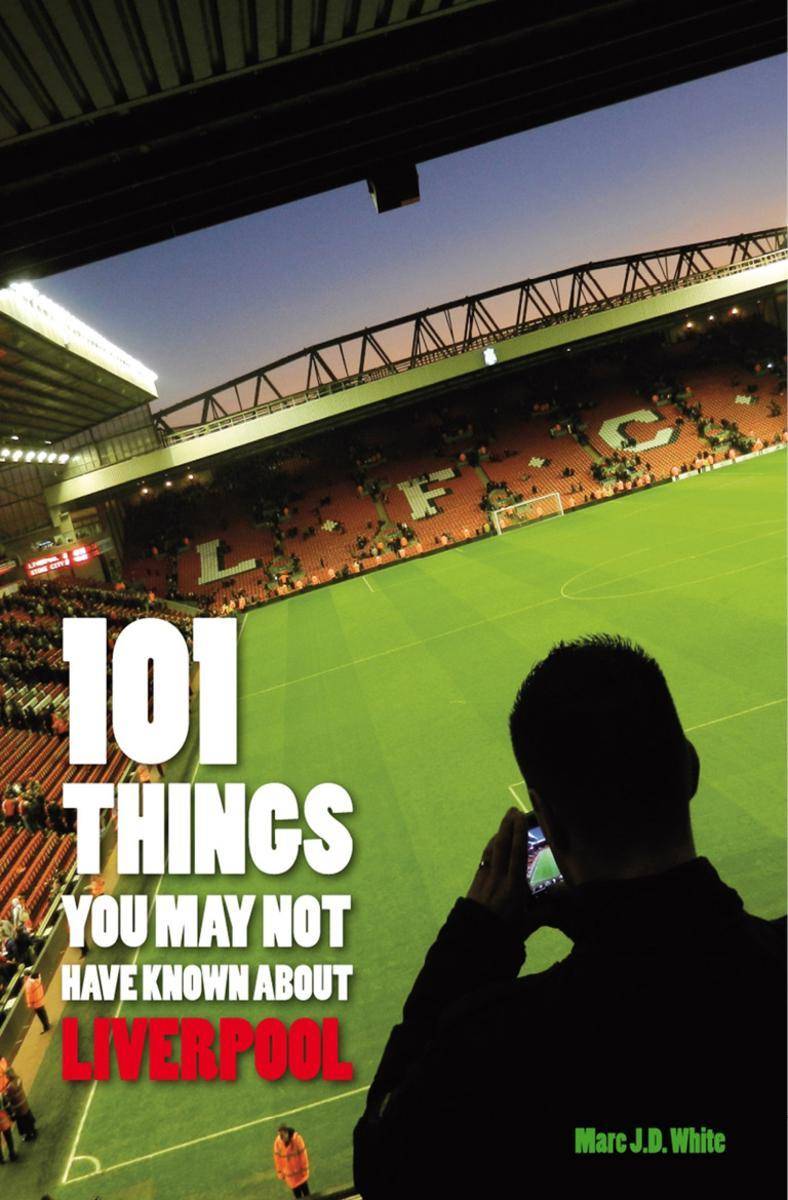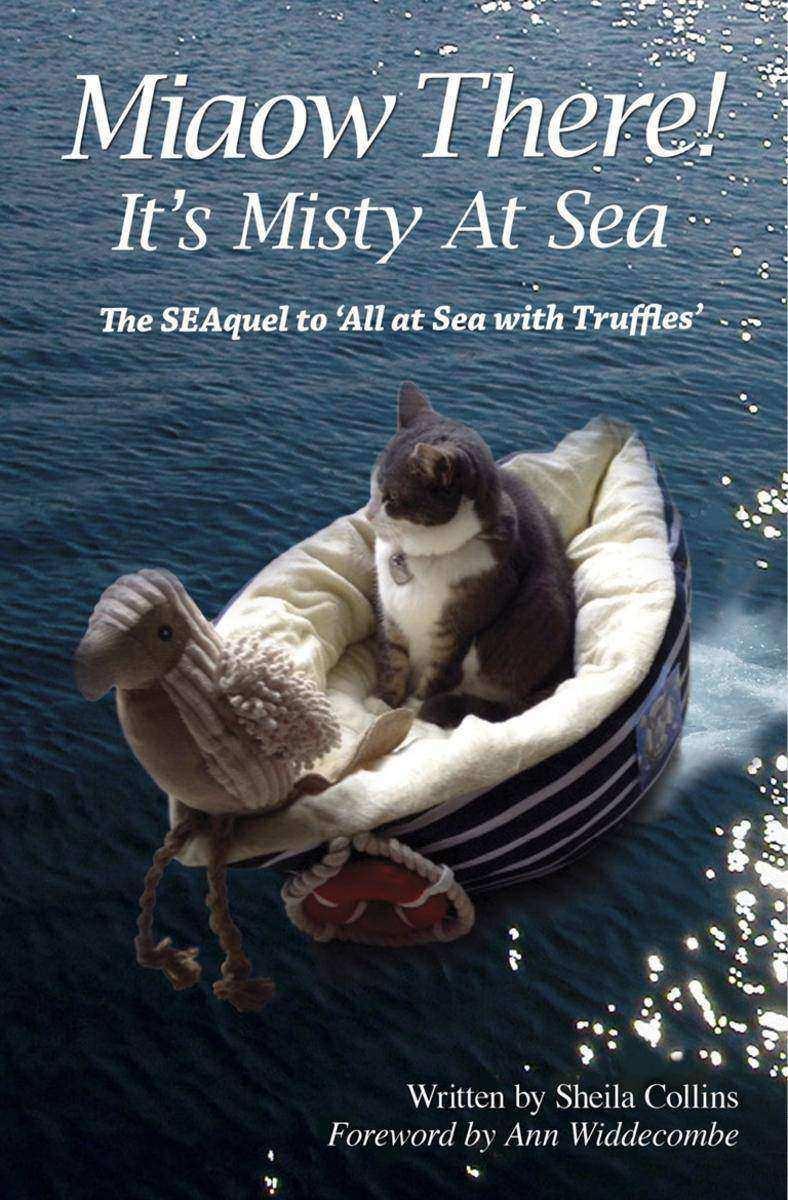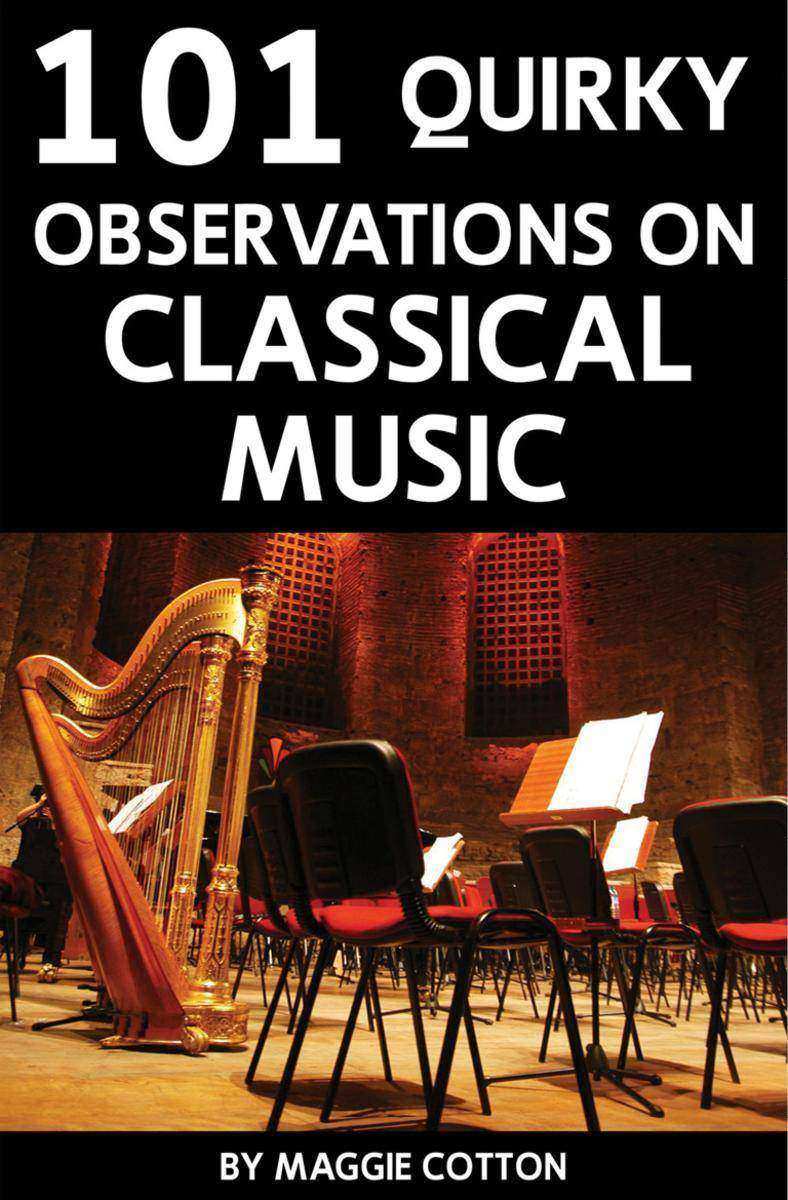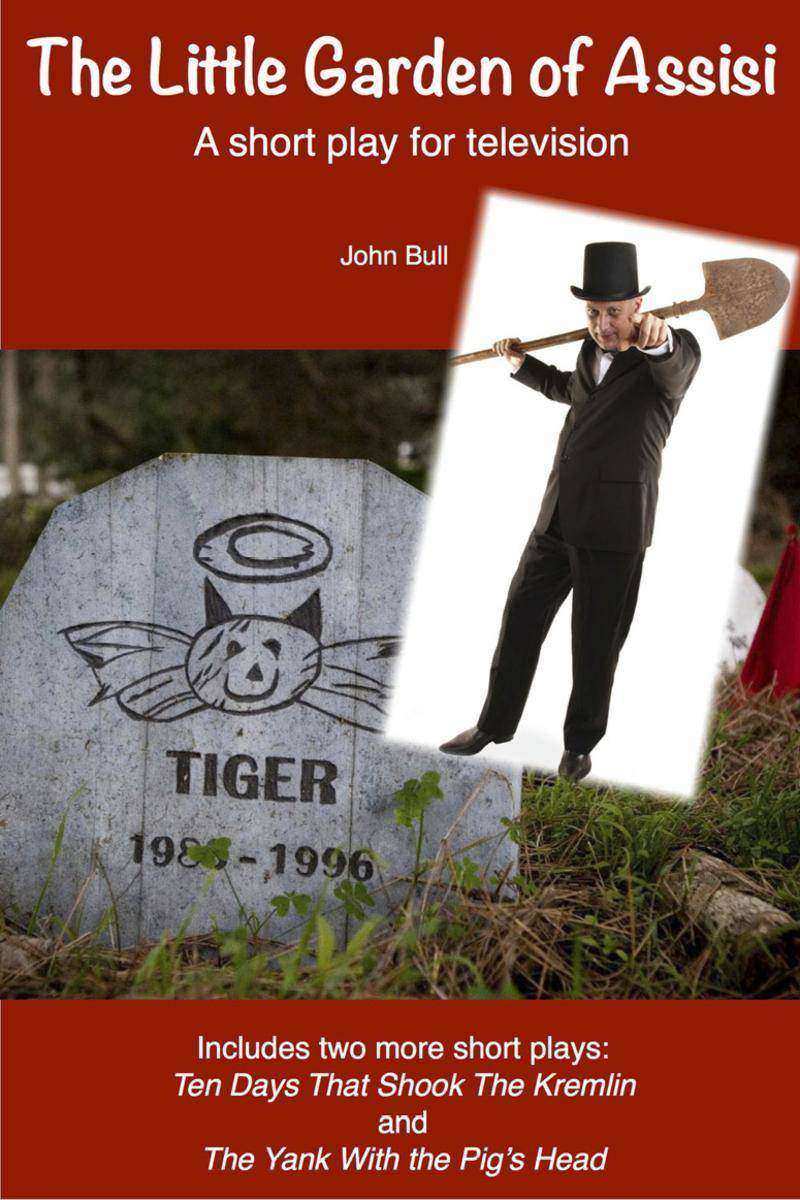
Union J Quiz Book
¥24.43
Are you a fan of Union J? If so, you will probably be able to name the band members but how much else do you know about the four boys? Whether you are fully familiar with the lads from Union J, or would like to find out more about them, this quiz book is for you. With what record company did Union J sign after their time on The X Factor in 2012? Where did Union J first perform their single 'Carry You'? During what month in 2013 did Union J take over the Daybreak sofa at 7.50 am each morning for a week? The answers to these questions and more can all be found inside this new book. Packed with fun facts about all aspects of Union J, including many personal details, The Union J Quiz Book documents the boys' journey from four unknown artists into successful X Factor boy band and beyond. With 100 questions about your favourite group, this is a book Union J fans of all ages just won't want to be without.

101 Things You May Not Have Known About Liverpool
¥24.43
Brief Description: Liverpool FC is one of England's most popular football teams with an army of loyal supporters and a long and successful history but how much information have you picked up about the club through the years? If you are a fan of the Reds or would like to find out more about them 101 Things You Might Not Know About Liverpool will tell you everything you ever wanted to know.How many players have scored over 100 goals for Liverpool? What five companies have been the club's kit sponsors? How many Liverpool players have captained England? The answers can all be found in this book together with lots more fascinating facts about Liverpool FC.This gem of a book will tell you about club records and history, famous players and managers, memorable wins, draws and losses and all those golden moments from Liverpool's glorious past. This is a must-have book for Liverpool fans of all ages and anyone with an interest in English Premier League football.

101 Facts you didn't know about Chas and Dave
¥29.33
Are you a Chas & Dave fan? Do you know all the words to their memorable hit songs and enjoy singing along? Have you been to see the 'rockney' duo perform live or, like thousands of others, watched them on TV? If you like Chas & Dave, this book is your chance to get to know them better. Dip inside 101 Things You Didn't Know About Chas & Dave to discover some little known facts and trivia associated with the creators of such boogie-woogie, sing-along classics as 'Rabbit', 'Gertcha' and 'There Aint' No Pleasin' You'. Full of fascinating facts, and compiled by one half of the duo, Chas Hodges, this book includes many personal details and information about Chas & Dave's projects, past and present. This book will appeal to everyone who enjoys the music-hall humour and folk-style entertainment associated with Chas & Dave and is a must-have read for all those people who would like to learn more about the musical duo.

Miaow There!
¥39.14
Following on from the success of her previous book, All at Sea with Truffles, Sheila Collins continues on the theme of cruising, with the story being picked up by her mischievous grey and white cat, Misty. In this fictional account, Misty takes us on a journey on board ship, as we experience life at sea through the eyes of a cat. Being an independent kind of animal, Misty naturally seeks out different adventures to her predecessor, Truffles, with hilarious consequences. With a foreword by former MP and cat lover Ann Widdecombe, Miaow There! It's Misty at Sea provides the reader with a humorous insight into the mind of a cat. From the many different sights, sounds and smells to the strange and wonderful people she encounters, Misty will give you a tantalising taste of life on board a cruise ship as she travels with her best friend and owner, Sheila. This charming tale will appeal to anyone who has ever been on a cruise, or has thought about going on one, and to all cat lovers everywhere.

Playing Sherlock Holmes
¥19.52
Playing Sherlock Holmes contains three verbatim interviews - with John Wood, Robert Stephens and Christopher Lee - about their very different experiences of appearing as Holmes on stage and screen. The interviews were conducted in 1974. At the time, John Wood was appearing on stage in an acclaimed revival of William Gillette's play Sherlock Holmes, a Royal Shakespeare Company production; Robert Stephens had recently completed The Private Life of Sherlock Holmes for film director Billy Wilder; and Christopher Lee - who had a role as Mycroft Holmes in that film - had earlier played the lead role in Sherlock Holmes and the Deadly Necklace. The interviews have been transcribed from tapes held in the Arthur Conan Doyle Collection - Richard Lancelyn Green Bequest at Portsmouth Museum.

John Newman Quiz Book
¥24.43
Are you a fan of John Newman? Have you followed his progress through the charts from the release of his debut single to receiving three Brit award nominations? Would you like to find out more about the talented singer and musician? If so, The John Newman Quiz Book is definitely for you. The trademark streak in John's hair was originally a tribute to which soulful female artist who had a similar blonde streak? How did John celebrate 'Love Me Again' reaching number 1 in the UK singles charts? At what overseas festival did John headline in July 2014? The answers to these questions and more can all be found in this fun quiz book. John has been steadily building up a dedicated following ever since he featured on Rudimental's chart-topping single 'Feel the Love'. Since then, John's popularity has continued to rise so make sure that you are the first to find out all about the distinctive artist. With 100 questions all about your favourite singer, this is a must-have book for John's growing fanbase.

101 Interesting Facts on Autistic Spectrum Disorder
¥24.43
Does a member of your family have Autistic Spectrum Disorder (ASD) or is someone close to you showing signs of being affected by it? Do you know what traits to look out for and how to respond to people with ASD? Would you like to gain a better insight of the problems associated with the disorder? If so, this book has been written with you in mind. How long do the effects of ASD last and can it be accurately diagnosed? Is ASD more common in boys or girls? What are the traits peculiar to people with ASD? 101 Interesting Facts on Autistic Spectrum Disorder has all the answers and is an excellent starting point for anyone who wants to understand the characteristics of ASD and how to recognise them. Written in a positive, easy-to-understand format, this book is the ideal reference for anyone who looking for a fast way to learn the basics of ASD. This is an invaluable guide that you won't want to be without.

Ultimate Boy Band Quiz Book
¥39.14
Are you up to date with current boy bands? Can you tell One Direction from Union J or what makes Take That different from JLS and The Wanted? If you know all there is to know about the aforementioned groups, or would like to find out more, The Ultimate Boy Band Quiz Book is definitely for you. Which boy band's members were appointed ambassadors for Pokemon during 2011? Which boy band recorded a cover version of a 1977 Bee Gees song? Which group supported Britney Spears in concert in Manchester? Find out the answers to these questions and many more inside this quiz book. With so many facts about your favourite boy bands brought together in one exciting book, you can't help but learn something new. Featuring One Direction, Take That, The Wanted, Union J and JLS, this book will appeal to music lovers of all ages. Whether you are a long-time fan of Take That or secretly dance around the kitchen to the sounds of One Direction, this book has something for everyone. Download it to your eReader and enjoy at your leisure.

101 Quirky Observations on Classical Music
¥24.43
Are you a fan of classical music? Can you name all the well-known composers, conductors and the compositions they are associated with? Or perhaps, you would like to learn more about them? If so, you are certain to enjoy the quotes and musical miscellany in 101 Quirky Observations on Classical Music. Who defined music as 'a science that would have us laugh and sing and dance'? Which composer said, 'the trombones are too sacred for frequent use'? What writer requested, 'please do not shoot the pianist, he is doing his best'? The answers to these questions and similar brain-teasers can all be found inside this book. With sections on composers, compositions, instruments, orchestras and their musicians, conductors, soloists and opera as well as much more classical music related trivia, this book has something for everyone. This book is a great way to find out more about classical music and those who have been involved in writing, playing and performing it through the years. This is a must-have for anyone who listens to, plays or appreciates classical music.

Kesha Quiz Book
¥24.43
Are you a fan of American singer-songwriter Kesha? Do you enjoy her particular style of music and sing along to her songs? Are you one of the thousands who brought her albums and helped to turn Kesha into a popular, award-winning, contemporary artist? If you like Kesha and would like to find out more about her, The Kesha Quiz Book will tell you everything you need to know? When and where was Kesha born? What was the name of her debut album? How many siblings does she have? What single was her biggest hit? Gen up on details about Kesha's professional and personal life by tackling the 100 questions in this book. Packed with fun and informative facts all about Kesha, you are certain to learn something new about the bubbly performer and her rise to fame. This is a must-have book for Kesha fans of all ages, so whether you are nine or ninety this book is a great way to find out about your favourite artist.

Fifth Harmony Quiz Book
¥24.43
Are you a fan of American girl band Fifth Harmony? Have you followed the girls' success from auditioning as solo artists on The X Factor USA to the formation of Fifth Harmony and beyond? If you think you know all about Ally, Normani, Dinah, Lauren and Camilla, or would like to find out more about them, dip inside The Fifth Harmony Quiz Book. What song did Ally sing during her audition on The X Factor USA in 2012? When the group was formed by Simon Cowell and Demi Lovato, what was the band's original name? What award did Fifth Harmony win at the 'People's Choice Awards 2016'? The answers can all be found in this exciting new quiz book. With 100 questions and fascinating facts all about Fifth Harmony, including many personal details, you are certain to learn something new about this popular girl band. This is a must-have book for everyone who supported the girls on their The X Factor USA journey and who continue to enjoy the music of Fifth Harmony.

Ellie Goulding Quiz Book
¥24.43
Are you a fan of Ellie Goulding? Have you followed Ellie's steady rise to fame from the release of her debut album in 2010 to current chart success? Would you like to find out more about the talented singer-songwriter and instrumentalist? If you answered yes to any of the above questions, you won't want to be without The Ellie Goulding Quiz Book. Can you name Ellie's second studio album, released in 2012? What BRIT award was Ellie nominated for, and subsequently won, in 2010? Do you know how many instruments Ellie can play? The 100 similar questions in this quiz book have been researched and compiled to test your knowledge of your favourite star and so that you can get to know her better. Bringing you up to date with all the music, events and activities of this popular and versatile performer, this book is packed with information. A fun and entertaining book for the whole family and a must-have for Ellie Goulding fans from five to 95.

101 Interesting Facts on the History of Horse Racing
¥24.43
Are you a fan of horse racing? Do the origins of this action-packed sport intrigue you? Would you like to find out more about the horses, riders and trainers involved in the famous races? If so, you are certain to enjoy 101 Interesting Facts on the History of Horse Racing. It's a chronological journey from the earliest days of racing. Read about racing before the days of the thoroughbred; the first recorders of racing; the mystery of the foundation stallions; the origin of grey horses; twins; the early bookmakers and other Turf personalities; the American Godolphin Arabian; the truth behind the origins of the Grand National and who was the real winner of the 1880 Derby. The answers can all be found in this informative new book along with many more fascinating facts about the history of racing. This book is packed with carefully researched, detailed information about all aspects of racing including famous runners, breeders, owners, jockeys and much more, so that you can't fail to learn something new. This is a must-have book for anyone with an interest in racing.

Little Garden of Assisi
¥29.33
At the graveside of Chippums - beloved pet of Mrs Tarleton - the unctuous proprietor of The Little Garden of Assisi is the model undertaker, consoling the bereaved owner and reassuring her of the dog's happy existence in the afterlife. But when the mourners have gone, it's a very different story. Happy to continue to dupe unsuspecting customers, and pocket the rewards, Dribone seems to lead a charmed existence: until the Mayor arrives with a very curious request. The Little Garden of Assisi is one of three twenty-minute comedies for television in this ebook: the others are Ten Days That Shook The Kremlin, and The Yank With the Pig's Head.

Magnum, P.I. Quiz Book
¥29.33
Were you a fan of the 1980s' cult American series Magnum P.I.? Can you remember the names of the four main characters? Was Magnum P.I. one of your favourite TV shows from yesteryear? If so, you won't want to be without this new quiz book. What was Magnum's iconic Hawaiian shirt called? Who was the original composer of the Magnum P.I. theme song? In which major film was actor Tom Selleck originally cast? The answers to these questions and more can all be found inside The Magnum P.I. Quiz Book. With 300 questions on the characters, the actors who brought them to life, writers, episodes, guest stars, cars and much more Magnum related trivia, this book will take you back in time as you relive all those memorable moments from Magnum P.I. Full of facts about the show that had audiences across the globe glued to their screens, this book will tell you everything you ever wanted to know about the award-winning, iconic TV series. This is a must-have for Magnum P.I. fans of all ages.

101 Interesting Facts on Ronnie Biggs and the Great Train Robbery
¥24.43
The Great Train Robbery, and the part Ronnie Biggs played in it, is one of the most famous true crime stories of all time. Ronnie's imprisonment, subsequent escape and life on the run has been the subject of much discussion and this new book sets out the facts for anyone wishing to find out what really happened on the day of the robbery and in the years beyond. Do you know how many members of rail staff were on board the train on the day of the robbery? Are you aware which celebrities became involved in the Free Ronnie Biggs Campaign? Can you name the many films, documentaries and books that have been produced about the Great Train Robbery? All this information and more is in 101 Interesting Facts on Ronnie Biggs and The Great Train Robbery. Despite Ronnie Biggs' advancing age and the fact that 2013 marks the 50th anniversary of the Great Train Robbery, the daring 1963 heist still attracts a great deal of interest. If you would like to know the facts, this book is for you.

Ronnie Biggs Quiz Book
¥24.43
Ronnie Biggs is widely known for his part in the Great Train Robbery of 1963, his subsequent escape from prison, and notoriety as he lived as a fugitive around the globe with his family. Biggs' story has been well documented over the years but how much do you really know about the man behind the headlines? The Ronnie Biggs Quiz Book is your chance to gen up on all the facts. How old was Ronnie when he first appeared in court? On what date did Ronnie receive a 30 year sentence? Who was Ronnie's famous cellmate in Brazil? The answers to these questions and more can all be found in this fascinating new book. The 50th anniversary of the Great Train Robbery in 2013 has renewed interest in the gang who pulled of this audacious heist, and Ronnie Biggs in particular. Packed with information, this book will tell you everything you want to know about Ronnie Biggs, his life on the run and his part in one of the most talked about crimes of all time.

Murder & Mystery Trails of Northumberland & The Borders
¥29.33
Popular TV ghosthunter, Clive Kristen, takes the reader in search of the most notorious murderers in Northumberland's history and tries to unravel the circumstances and mysteries that still surround their crimes. The stories are woven into their historical context within the area. Although the trails are largely rural, we have included the region's capital and some of its most ancient buildings. Many of the stories have never been published before in any format. So get out your boots and brollies and join the author at some of his favourite murder scenes.

Ashley & Cheryl Cole
¥14.62
Ashley & Cheryl Cole - Where Did It All Go Wrong? is a quick-read biography, focusing on Cheryl and Ashley's relationship, marriage and divorce. It looks at the parallels in their careers, the ups and downs, and investigates Ashley's alleged cheating with numerous women. Ultimately it asks the question 'Where Did It All Go Wrong' - could anything have been done to prevent the break-up, or was the marriage doomed from the beginning.

Progressive Secular Society
¥63.67
A progressive secular society is one committed to the widening of scientific knowledge and humane feeling. It regards humanity as part of physical nature and opposes any appeal to supernatural agencies or explanations. In particular, human moral perspectives are human creations and the only basis for ethics. Secular values need re-affirming in the face of the resurgence of aggressive supernatural religious doctrines and practices. This book gives a set of 'secular thoughts for the day' - many only a page or two long - on topics as varied as Shakespeare and Comte, economics, science and social action.

A-Z of Atari 2600 Games
¥19.52
The A-Z of Atari 2600 Games: Volume 3 features reviews of three different games for each letter of the alphabet. The games range from the very earliest releases in the 70s to the modern homebrew games of today. This book shows you just how diverse the library of titles is for the Atari 2600 and how it became one of the best selling consoles of all time.




 购物车
购物车 个人中心
个人中心



